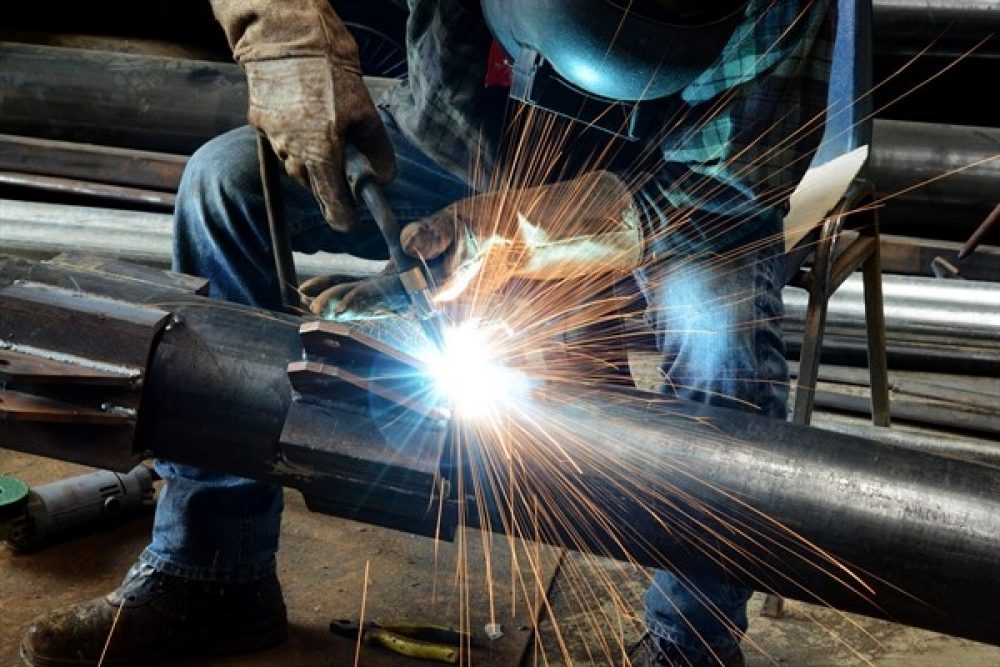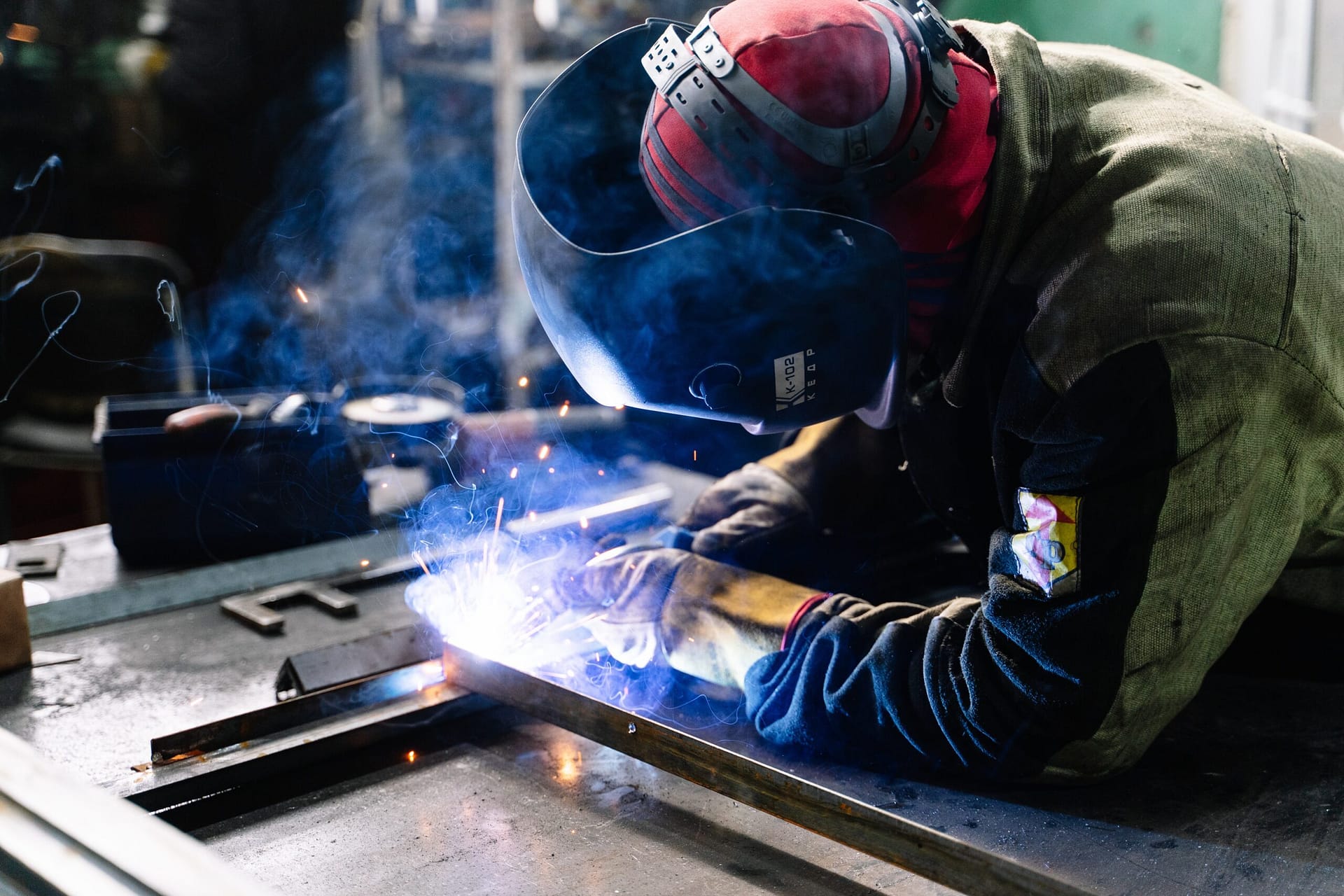Typical Welding Repair Issues and Just How to Address Them Properly
Welding repair work usually come across a series of problems that can jeopardize the integrity of the end product. Typical problems include insufficient infiltration, porosity, and misalignment, among others. Each problem provides unique difficulties that need certain approaches for resolution. Recognizing these concerns is vital for welders aiming to improve their outcomes and skills. This discussion will certainly explore these typical welding repair issues and reliable methods to address them.
Poor Infiltration
Inadequate penetration happens when the weld steel fails to completely fuse with the base product, causing weak joints and potential architectural failings. This concern typically stems from not enough heat input, incorrect electrode angle, or improper welding speed. Welders may experience inadequate penetration because of a miscalculation of the essential criteria for a certain product density or kind. Furthermore, contamination on the base material's surface area can impede efficient bonding, intensifying the trouble. To address inadequate infiltration, welders ought to assure appropriate setups on their devices and keep a clean job surface. Regular inspection of welds is advised to identify any deficiencies early, enabling prompt corrections and the prevention of jeopardized architectural stability in bonded assemblies.
Porosity
Porosity is a typical issue in welded joints that manifests as tiny gas bubbles trapped within the weld steel. This issue can jeopardize the integrity of the weld, causing reduced stamina and prospective failing under anxiety. Belgrade Welding. Porosity normally emerges from contamination, dampness, or incorrect welding techniques, which enable gases to leave into the molten weld pool. To resolve porosity, welders should assure proper surface area preparation, maintain a tidy workplace, and utilize appropriate welding criteria. Additionally, choosing the appropriate filler product and shielding gas can minimize gas entrapment. Routine assessment and screening of welds can help determine porosity early, ensuring timely corrective actions are taken, therefore preserving the quality and dependability of the bonded structure
Imbalance
Imbalance in welding can occur from different variables, including inappropriate configuration and thermal expansion. Comprehending the source is essential for efficient resolution. Numerous correction strategies are readily available to straighten components and guarantee structural stability.
Reasons for Misalignment
Welding imbalance typically comes from a range of underlying problems that can jeopardize architectural integrity. One main reason is improper fit-up of elements prior to welding, which can cause gaps and irregular surfaces. Variants in thermal expansion throughout the welding procedure can additionally cause distortion, especially if the materials being joined have different coefficients of growth. Furthermore, inadequate clamping and fixturing may fall short to hold parts securely in position, bring about activity during welding. Improperly maintained devices, including welding machines and tools, may present variances in the weld grain, additional adding to misalignment. Operator error, stemming from inadequate training or experience, can additionally play a significant function in producing misaligned welds.

Correction Techniques Available
Dealing with misalignment effectively requires a mix of rehabilitative techniques tailored to the details issues handy. One usual approach is using jigs or components to hold elements in the appropriate setting throughout welding, guaranteeing constant positioning. Additionally, pre-heating the products can aid decrease distortion and enhance fit-up. For significant imbalance, mechanical realignment methods, such as making use of hydraulic jacks or clamps, can be used to correct the placement before welding. Post-weld warmth therapy may also be required to ease tensions brought on by misalignment. Lastly, mindful examination and adjustment during the setup stage can protect against misalignment concerns from ending up being substantial issues, advertising a smoother welding process and boosting overall structural integrity.
Distortion
Distortion is an usual challenge in welding that can arise from various factors, including unequal heating & cooling. Understanding the causes of distortion is vital for carrying out reliable prevention methods. Resolving this problem not only enhances architectural integrity yet likewise enhances the overall quality of the weld.
Root causes of Distortion
When subjected to the intense heat of welding, products commonly undertake changes that can bring about distortion. This sensation mainly develops from thermal development and tightening throughout the welding process. As the weld area warms up, the product broadens; upon air conditioning, it contracts, which can create internal anxieties. Furthermore, irregular home heating throughout a work surface can aggravate these stress and anxieties, resulting in bending or flexing. The type of material also plays a substantial function; steels with varying thermal conductivity and coefficients of expansion may react in a different way, resulting in unpredictable distortions. Bad joint design and inadequate fixturing can contribute to imbalance during welding, increasing the possibility of distortion. Understanding these reasons is crucial for effective welding fixing and click for source prevention approaches.
Prevention Techniques
Efficient avoidance methods for distortion during welding concentrate on managing warmth input and guaranteeing correct joint layout. Maintaining a regular warm input aids to reduce thermal development and contraction, which can result in distortion. Utilizing methods such as preheating the workpiece can likewise minimize the temperature level slope, promoting consistent heating. Additionally, picking suitable joint layouts, such as T-joints or lap joints, can boost security and reduce stress focus. Executing appropriate fixturing to protect the workpieces in position additionally aids in keeping positioning throughout the welding process. Staggered welding series can disperse warmth more uniformly, protecting against local distortion. By using these methods, welders can significantly lower the probability of distortion and boost the general quality of their welds.
Cracking
Splitting is an usual concern come across in welding repair services, frequently arising from numerous variables such as inappropriate cooling prices, product option, or insufficient joint preparation. The incident of fractures can considerably endanger the stability of the weld, causing possible failures during procedure. To resolve this concern, welders have to first analyze the origin, guaranteeing that products are suitable and appropriately picked for the details application. Furthermore, controlling the cooling rate throughout the welding process is necessary; fast cooling can cause stress and anxiety and cause breaking. Proper joint layout and preparation also add to minimizing the threat. Executing these techniques can enhance weld high quality and sturdiness, eventually decreasing the likelihood of breaking in finished weldments.

Incomplete Fusion
A considerable concern in welding repair work is insufficient blend, which takes place when the weld steel does not sufficiently bond with the base product or previous weld passes - Montana Mobile Welding and Repair. This issue can result in weak points in the joint, possibly jeopardizing the integrity of the bonded framework. Factors adding to insufficient fusion consist of insufficient warm input, inappropriate welding strategy, and contamination of the surfaces being joined. To resolve this problem successfully, welders must ensure appropriate pre-weld cleaning and surface area preparation, in addition to adjust their welding specifications to accomplish adequate penetration and fusion. Regular examination throughout the welding procedure can additionally aid recognize incomplete combination early, enabling prompt rehabilitative actions to boost the general quality of the weld
Overheating
While welding repair work can boost architectural stability, overheating provides a significant challenge that can lead to material degradation. Too much heat during welding can alter the mechanical residential or commercial properties of metals, leading to lowered stamina, enhanced brittleness, and warping. This sensation is especially critical in high-stress applications where structural reliability is critical. Determining getting too hot can include aesthetic examinations for staining or distortion, in addition to monitoring temperature level throughout the welding procedure. To mitigate the risks related to getting too hot, welders ought to utilize suitable techniques, such as controlling warmth input, adjusting travel speed, and using appropriate filler materials. Additionally, implementing pre- and post-weld heat treatments can help bring back material get redirected here homes and improve the total top quality of the repair, making sure long-term efficiency and safety.
Often Asked Concerns
What Are the Common Signs of a Welding Problem?

How Can I Check My Welds for High quality?
To check welds for high quality, one can utilize visual inspections, ultrasonic testing, and radiographic methods. Each technique ensures structural honesty, recognizes flaws, and validates adherence to defined criteria, inevitably improving the integrity of the welded joints.
What Safety Precautions Should I Take While Welding?
When welding, one must focus on safety by putting on ideal personal safety tools, guaranteeing appropriate ventilation, protecting combustible products away, preserving a clean work space, and knowing environments to stop accidents and injuries.
Can I Fix a Weld Without Redoing the Entire Joint?
Repairing a weld without renovating the whole joint is possible, relying on the damage (Montana Mobile Welding and Repair Fabrication). Methods such as grinding, adding filler product, or utilizing a welding procedure can efficiently deal with specific imperfections while protecting the surrounding structure
What Tools Are Vital for Effective Welding Repair Works?
Vital devices for effective welding repair work include a welding equipment, cord brush, grinder, protective equipment, clamps, and filler materials. Each device plays an essential function in making certain high quality and security during the repair work process. Porosity normally arises from contamination, moisture, or incorrect welding techniques, which allow gases to run away into the molten weld swimming pool. Poorly conserved devices, consisting of welding machines and devices, may introduce inconsistencies in the weld bead, further contributing to misalignment. When subjected to the extreme warmth of welding, products frequently go through modifications that can lead to distortion. Cracking is a common concern run into in welding repair services, typically resulting from various variables such as incorrect cooling rates, material choice, or insufficient joint prep work. A substantial issue in welding repair services is insufficient blend, which happens when the weld steel does not adequately bond with the base material or previous weld passes.
Comments on “Immediate responses to weld misalignment in Montana Mobile Welding and Repair Fabrication”